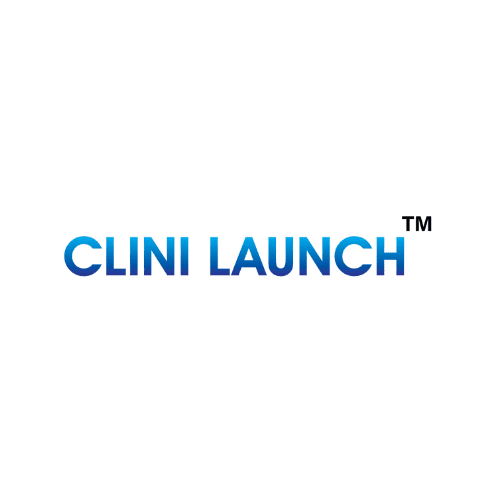Between 1932 and 1972, the U.S. government ran a study on 600 African American men in Tuskegee, Alabama. 399 had syphilis. None received treatment, even after penicillin became the standard cure in 1947. Researchers wanted to observe the disease’s “natural progression.” 128 men died. 19 children were born with congenital syphilis after the infection spread to participants’ wives.
This wasn’t an accident. It was systematic deception presented as science.
The Tuskegee study ended in 1972 after a whistleblower leaked the details to the press. The public outrage forced a reckoning: if researchers could justify this level of harm, the entire system needed enforceable boundaries. That reckoning produced Good Clinical Practice (GCP) guidelines—a global framework that makes ethical violations harder to hide and impossible to justify.
What GCP Actually Does
Good clinical practice principles aren’t a suggestion. It’s the international standard that governs how clinical trials are designed, conducted, monitored, and reported. Every trial that wants regulatory acceptance—whether for FDA approval in the U.S. or EMA approval in Europe—must follow these guidelines. The International Council for Harmonisation (ICH) publishes the core GCP guidelines, particularly ICH E6, which most countries adopt as binding regulation.
If you work in clinical research at any level, GCP defines your job. Clinical Trial Assistants use it to maintain trial master files. Clinical Research Associates use it to monitor sites. Principal Investigators use it to protect participants. Data managers use it to ensure every recorded value can be traced, verified, and defended during an audit.
The framework rests on one non-negotiable premise: participant safety comes before research goals. Everything else flows from that.
The 10 Core Principles That Define GCP
1. Participant Rights and Safety Override Everything
Every trial needs approval from an Independent Ethics Committee (IEC) or Institutional Review Board (IRB) before it starts. These committees review the protocol, assess risks, and verify that participant protections are adequate. If the risk-benefit ratio doesn’t justify the study, it doesn’t proceed.
This principle showed up in a 2016 FDA warning letter to a clinical site in Florida. Investigators enrolled participants who didn’t meet eligibility criteria and failed to report serious adverse events to the IRB. The FDA suspended the site’s ability to conduct trials. The research was invalidated, and ongoing participants had to be transferred to compliant sites.
The rule is clear: if protecting a participant conflicts with collecting data, you stop collecting data.
2. Trials Must Follow Scientifically Sound, Approved Protocols
A protocol isn’t a starting point for improvisation. It’s a binding contract that specifies exactly what happens to participants, when, and why. Any deviation—even one that seems minor—requires formal documentation and often requires IRB approval before implementation.
In 2018, a diabetes trial at multiple U.S. sites ran into problems when coordinators at one location started adjusting medication timing based on participant convenience rather than the protocol schedule. The sponsor discovered this during routine monitoring. Every affected participant’s data had to be flagged as a protocol deviation. Some participants were excluded from efficacy analysis entirely because their dosing couldn’t be verified against the approved schedule.
The protocol exists because the scientific validity of the trial depends on everyone doing exactly the same thing. Change the protocol without approval, and you’re no longer conducting the study that was reviewed and authorized.
3. Every Task Requires a Qualified, Accountable Person
For best clinical practice, GCP assigns explicit responsibilities to every role: sponsors, investigators, monitors, data managers, pharmacists. If something goes wrong, there’s always a named person who was supposed to prevent it. This isn’t bureaucracy—it’s accountability.
A 2020 inspection by the European Medicines Agency (EMA) found that a contract research organization (CRO) had allowed administrative staff to perform source data verification—a monitoring task that requires specific GCP training and clinical knowledge. The CRO couldn’t demonstrate that these staff members had the qualifications for the work they were doing. The inspection resulted in a finding of non-compliance, and the sponsor had to re-monitor all affected sites.
Delegation is allowed, but only to people with documented training and competence for that specific task. If you can’t prove someone was qualified to do the work, the work is considered invalid.
4. Informed Consent Must Be Voluntary and Comprehensive
Informed consent means more than a signature on a form. Participants must understand what the trial involves, what might go wrong, and that they can withdraw at any time without penalty. The consent discussion must happen before any trial procedures begin, and it must be documented.
The FDA issued a warning letter in 2019 to a site conducting oncology trials after discovering that consent forms were signed after participants had already received their first dose of the investigational drug. The site also failed to document that participants understood the trial’s risks, including potentially life-threatening side effects. The trial data from those participants couldn’t be used, and the site faced regulatory sanctions.
A signature without genuine understanding isn’t consent—it’s a liability waiting to be discovered.
5. Data Must Meet ALCOA+ Standards
ALCOA+ defines what makes clinical trial data credible:
- Attributable: You can identify who recorded it
- Legible: It can be read and understood
- Contemporaneous: It was recorded when the observation happened, not hours or days later
- Original: It’s the first recording, or a verified copy
- Accurate: It reflects what actually occurred
- Complete: Nothing relevant is missing
- Consistent: It matches across all records
- Enduring: It’s stored in a way that prevents loss or degradation
- Available: Authorized people can access it when needed
In 2017, the FDA inspected a cardiovascular trial site and found that nurses were recording vital signs on scratch paper during patient visits, then transcribing them into the electronic data capture (EDC) system hours later. The scratch paper was discarded. This violated the “Contemporaneous” and “Original” requirements because there was no way to verify that the transcribed values matched what was actually measured.
The site received a warning letter. The sponsor had to implement 100% source data verification at that location for all future visits, which tripled monitoring costs.
If you can’t prove when data was recorded and by whom, regulators treat it as unreliable. Unreliable data doesn’t support drug approval.
6. Biological Samples Need Complete Chain of Custody
Every blood draw, tissue sample, or urine specimen collected in a trial must be tracked from collection through storage, analysis, and eventual destruction. Each transfer between people or locations gets documented with dates, times, and signatures.
A 2021 FDA inspection of a bioanalytical lab found that freezer logs for trial samples had gaps where temperatures weren’t recorded for multiple days. Some samples had been stored at temperatures outside the validated range. The lab couldn’t prove the samples remained stable and viable. The sponsor had to exclude all affected samples from analysis, which compromised secondary endpoints for the entire study.
Samples represent participants’ trust and physical contribution to research. Losing traceability means losing the ability to use those samples, which wastes their contribution and potentially delays important medical advances.
7. Monitoring Catches Problems While They’re Fixable
Sponsors must implement monitoring appropriate to the trial’s risk level. High-risk trials typically require on-site visits where Clinical Research Associates verify that consent forms are properly signed, source data matches what was entered into the EDC system, and protocol procedures are being followed.
During a 2019 site visit for a rare disease trial, a monitor discovered that a site coordinator had been recording eligibility assessments after participants were already enrolled and dosed. This meant participants might not have actually met entry criteria. The monitor immediately issued a finding. The sponsor placed the site on “enrollment hold” until every existing participant’s eligibility could be re-verified from source documents. Two participants had to be withdrawn because they didn’t actually meet inclusion criteria.
Early detection through monitoring prevented further enrollment of ineligible participants, which would have jeopardized the trial’s scientific validity and potentially exposed inappropriate participants to risk.
8. Adverse Events Get Reported on Regulatory Timelines
When something goes wrong—especially something serious or unexpected—specific reporting timelines kick in. Serious Adverse Events (SAEs) typically must be reported to the sponsor within 24 hours. The sponsor then has 7-15 days to report to regulatory authorities, depending on the severity and whether the event was expected.
In 2020, a Phase II oncology trial was placed on clinical hold by the FDA after the agency discovered that a site had failed to report two participant deaths within the required 24-hour window. The deaths occurred during the trial, but the site didn’t notify the sponsor for five and seven days, respectively. The sponsor’s subsequent reports to the FDA were therefore also delayed.
The FDA suspended enrollment across all sites until the sponsor could demonstrate improved safety reporting procedures. The delay cost months and significant funding, but more importantly, it meant the trial couldn’t assess whether the treatment was safe enough to continue developing.
Fast reporting exists because patterns of adverse events across sites can reveal safety signals that require immediate action—dose adjustments, protocol amendments, or trial termination.
9. Trial Records Must Be Retained and Accessible
Essential documents—protocols, consent forms, monitoring reports, lab certifications, investigator CVs—must be retained for a specified period, often 15-25 years depending on the jurisdiction. These records must remain accessible for regulatory inspections, which can happen years after a trial ends.
The FDA conducted a “for cause” inspection in 2018 at a site that had participated in multiple trials over the previous decade. The site couldn’t produce signed consent forms for a trial from 2015. Without those forms, the FDA couldn’t verify that participants had actually consented. The agency invalidated data from that site for that trial, which affected the overall trial results and required additional statistical analysis to demonstrate the drug’s efficacy without that site’s data.
Records aren’t kept for bureaucratic satisfaction. They’re the only way to prove, years later, that a trial was conducted ethically and in compliance with the approved protocol.
10. Quality Should Be Built Into the Design (Risk-Based Approach)
ICH E6(R2), updated in 2016, and the upcoming E6(R3) emphasize “Quality by Design” and risk-based monitoring. Instead of checking everything equally, sponsors identify which data points and processes are critical to participant safety and trial integrity, then focus monitoring and quality control on those areas.
A large cardiovascular outcomes trial implemented centralized statistical monitoring that automatically flagged sites with unusual patterns—too many protocol deviations, data entered in batches rather than continuously, or eligibility criteria that looked too perfect. This system identified a site where a coordinator had been fabricating data. An immediate for-cause audit confirmed the fraud, and all data from that site was excluded.
Automated monitoring caught the problem faster than traditional on-site visits would have. The risk-based approach allowed the sponsor to allocate resources where they mattered most, catching a serious compliance issue that could have compromised the entire trial.
How Different Roles Apply These Principles
Clinical Trial Assistants maintain the Trial Master File, ensuring every required document is present, current, and properly filed. When an inspector asks for the IRB approval letter or the investigator’s signed CV, the CTA must produce it immediately.
Clinical Research Coordinators obtain informed consent, schedule participant visits, collect samples, and serve as the primary point of contact for participants. They’re often the first to notice if a participant is experiencing an adverse event, which triggers the reporting cascade.
Clinical Research Associates visit or remotely monitor sites to verify that what’s documented actually happened. They check that consent was obtained before any procedures, that source data supports what was entered in the EDC, and that investigational product is being stored and dispensed correctly.
Principal Investigators are ultimately responsible for the conduct of the trial at their site. They ensure their team is trained, oversee medical decisions, and respond to safety issues. Regulatory authorities hold them accountable for everything that happens under their oversight.
Data Managers build databases that enforce ALCOA+ principles through validation checks, audit trails, and access controls. They query discrepancies and ensure that the final database is clean and defensible.
Pharmacovigilance Specialists collect, assess, and report adverse events. They determine whether an event meets the definition of “serious,” whether it was expected based on the known safety profile, and whether it might be related to the investigational product.
Quality Assurance Auditors conduct independent reviews of trial conduct, comparing actual practices against GCP requirements and the approved protocol. They identify systemic issues before regulatory inspectors do.
GCP Sits Within a Broader Quality Framework
Clinical trials don’t exist in isolation. The investigational product being tested was manufactured under Good Manufacturing Practice (GMP), which ensures consistency, purity, and proper labeling. Preclinical studies that supported the trial were conducted under Good Laboratory Practice (GLP), which governs how animal studies and lab research are performed and documented. After the drug is approved, ongoing safety monitoring follows Good Pharmacovigilance Practice (GVP).
These frameworks connect. If the manufacturing facility can’t prove the drug was made consistently (GMP failure), the clinical trial data becomes questionable because you can’t be certain what participants actually received. If preclinical toxicology studies weren’t properly documented (GLP failure), the safety basis for starting human trials is compromised.
GCP is the link between controlled laboratory research and real-world medical use. It’s where theory meets human biology, and where ethics become operational reality rather than abstract principles.
Why This Matters for Your Career
Understanding GCP isn’t optional background knowledge. It’s the framework that determines whether your work is credible, legally defensible, and ethically sound. Inspectors don’t care about effort or good intentions—they care about documentation, procedures, and compliance with GCP.
Every role in clinical research connects to these principles. If you handle documents, you’re maintaining the trial’s auditability. If you interact with participants, you’re upholding their rights and safety. If you touch data, you’re responsible for its integrity. There’s no position in clinical research where “I didn’t know” is an acceptable excuse for good clinical practice guidance violations.
The Tuskegee study happened because there were no enforceable standards to prevent it. GCP exists so that what happened in Tuskegee can’t happen again. Every time you follow these guidelines, you’re not just checking boxes—you’re honoring the contract between research and the people who volunteer for it.
Ready to build a career grounded in ethical, compliant clinical research? CliniLaunch’s PG Diploma in Clinical Research teaches you how to apply GCP principles in real-world roles—preparing you for a profession where precision and integrity aren’t optional.





